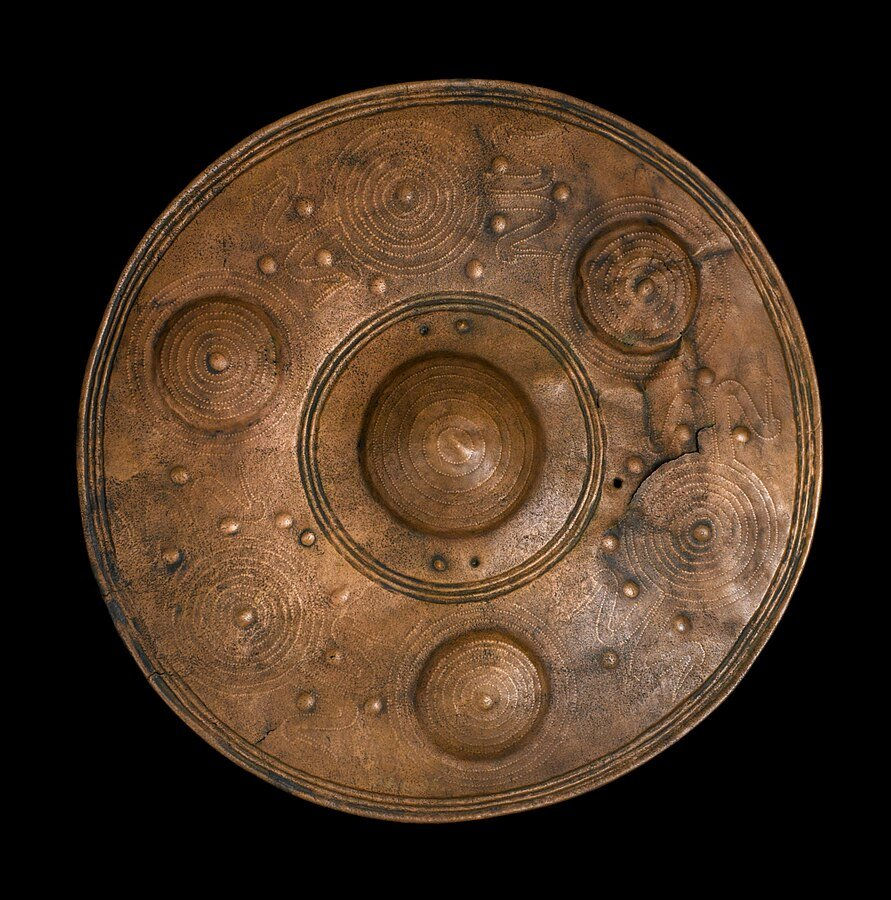Urnfield Culture: Bronze & Iron Age Europe
- Sylvia Rose

- Nov 22, 2023
- 4 min read
Updated: Nov 24, 2023
The Urnfield Cultures first appear as a people in 1300 BCE. They're quick to establish a wide swath of land from the Baltic Coast to the Italian Peninsula. At the same time, other powers rise to the forefront of Bronze and Iron Age Europe.
See also:
The Nordic Bronze Age (1700 - 500 BCE) influences metallurgy and varies the types of tools or weapons used. It's not unusual to see a stone hand axe next to a bronze dagger or iron artifact in burial or settlement sites.
As the name suggests the people of the Urnfield Culture cremate their dead and put the ashes in urns. Urns are placed in barrow or pit style graves.
Sometimes the ashes are sprinkled in the burial pit without the urn. Grave goods, personal items, good luck tokens, beads and precious stones might also be found at a burial site.
See also:
The Urnfields arise from the preceding powerhouse Tumulus Culture in a gradual transition. The Tumulus group buries the dead in mounds, tells, kurgans, cairns or tumuli, sometimes in layers.
The succeeding generation builds its village on top of the preceding one. Mesopotamian kurgans are among the oldest used. The Neolithic community of Catal hoyuk in present day Turkey has about eighteen generational layers found so far.
See also:
The widespread Urnfield culture consists of several different groups, including:
Lower Rhine groups
Knovitz culture
Lausitz culture
North Alpine groups
Middle Danube groups
Golasecca culture
Gava culture
Proto-Villanovan culture
Early use of iron is from meteorite finds, shaped with a hammer or stone. Along with the Nordic Bronze Age, the Atlantic Bronze Age in England and area brought new techniques of metal working. People learn to extract iron from rock and shape, mold and strengthen it at temperatures barely attained by mortals.
See also:
Iron is considered an inferior metal to bronze until the knowledge of ironworking spreads. Nonetheless, blacksmiths first appear around 1500 BCE in the continent, and industrial-grade steel work was already happening in Turkey in 1800 BCE, six hundred years before the beginning of the European Iron Age.
By 1200 BCE the techniques and advancements of the Urnfield culture take hold among neighboring groups, generally by assimiliation. First use of the name 'Urnfield' to describe the people is in late 19th century Germany.
See also:
In the Iron Age, Celts also occupied much of Europe. Eventually they spread north to the British Isles, and south to Italy. Several German place names including Worms come from the Celtic.
Borbetomagus, or "settlement in a watery area", translates to Vormatia in Latin and from there to today's Worms. The Rhine and Neckar rivers also owe their names to Celtic tribes. The Celts call the Rhine "Renos" meaning "flowing" or "he flows". It becomes Rhenus Pater in Latin, associated with the Rhine God, Father Rhine.
See also:
Origin of the cremation rite is considered to be Hungary in the 2nd millennium BCE. Cremation itself has been practiced as early as 5500 BCE by the Neolithic Cucuteni -Trypillia culture of modern Romania and Ukraine. Some cremations also appear in the Proto-Lusatian and Trzciniec cultures.
In burials, bodies are usually oriented north to south, knees bent, on the side. The Egyptians and other cultures believe the afterlife is more comfortable for the deceased if the body's in a position of relaxation.
See also:
The influence of the Urnfield culture spreads rapidly, reaching the northeast Iberian coast. Here, the urn rituals are adapted and adopted by nearby Celtiberians. Here also appear signs of wealthy or elite contacts, including rilled-ware, swords and crested helmets discovered in the southwest Iberian peninsula.
People have come a long way from living in pit houses. Settlements are busy and well-fortified, several above-ground dwellings with thatch or grass roofs. Trade opens the gates to new horizons. Settlements increase. But just as the Urnfields extend continental influence, disasters start to happen.
See also:
Hoards and fortified settlements indicate upheaval and warfare. A great collapse and further migrations occur as the Iron Age takes hold of Europe. Many and varied, they include:
The widespread Urnfield culture soldiers on. Pottery of the time is smooth, mimimally decorated, with cylindrical neck and fluted edge being popular. Kilns are already known. Beaten sheets of bronze are used to make vessels and containers.
See also:
Tin foil is used as an inlay in Swiss pile dwellings. Wood, stone, clay and metal materials exist together as houseware, tools or weaponry, spanning generations of expertise.
Bronze working rises to new heights with armor, helmets and shields as well as swords, spear heads and knife blades. Volcanic glass or obsidian is desired for sharpness of edges and cleavage similar to flint. Luxury abounds for those who have means.
See also:
Chariots change from the three-wheeled Lusatian model to the two-wheeler. Some four-wheel wagons are used for entire burials, with appropriate sacrifice and selection of grave goods. Both horses and oxen are used to pull wagons, though horses are more popular among the elite.
While iron tools, ornaments and weapons appear in settlements and gravesites, their use is limited. It's the developing Hallstatt culture (1200 - 500 BCE) who further exploits the potential of iron.
See also:












